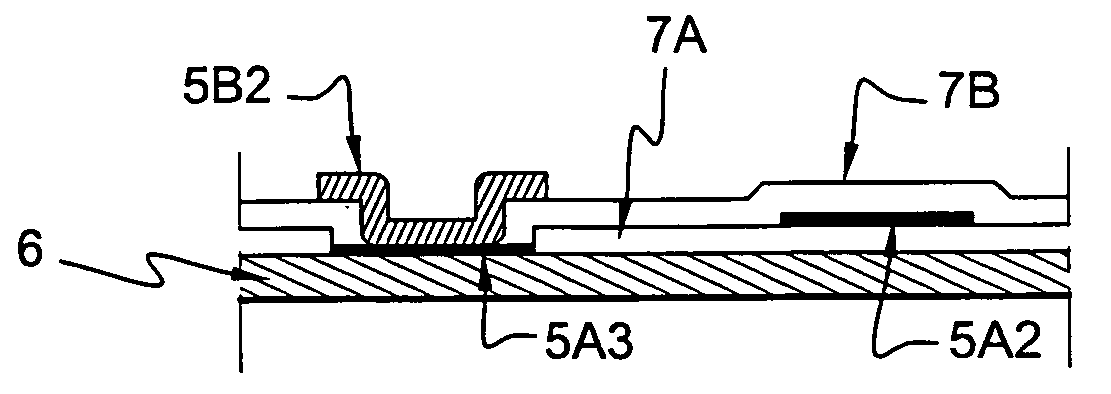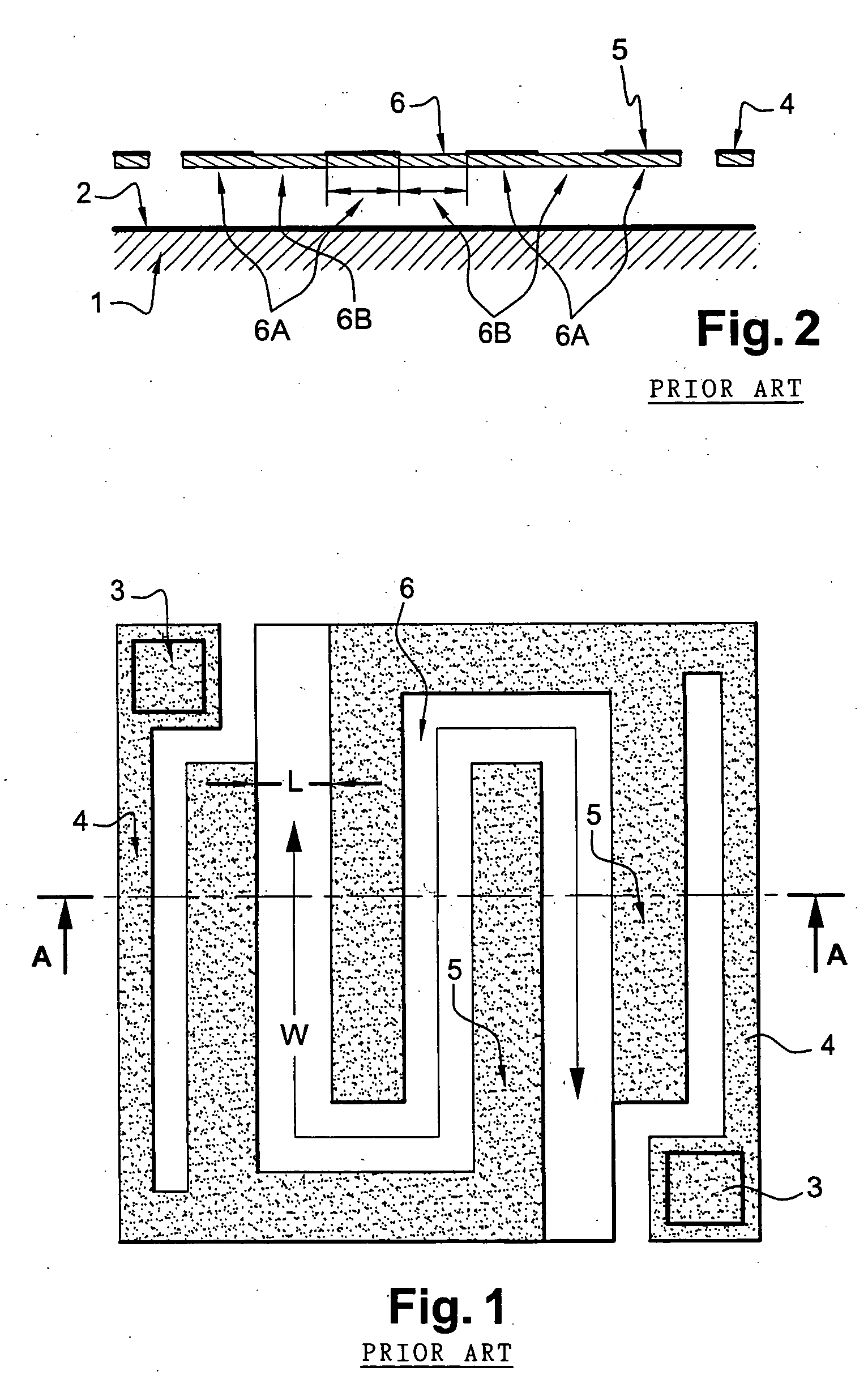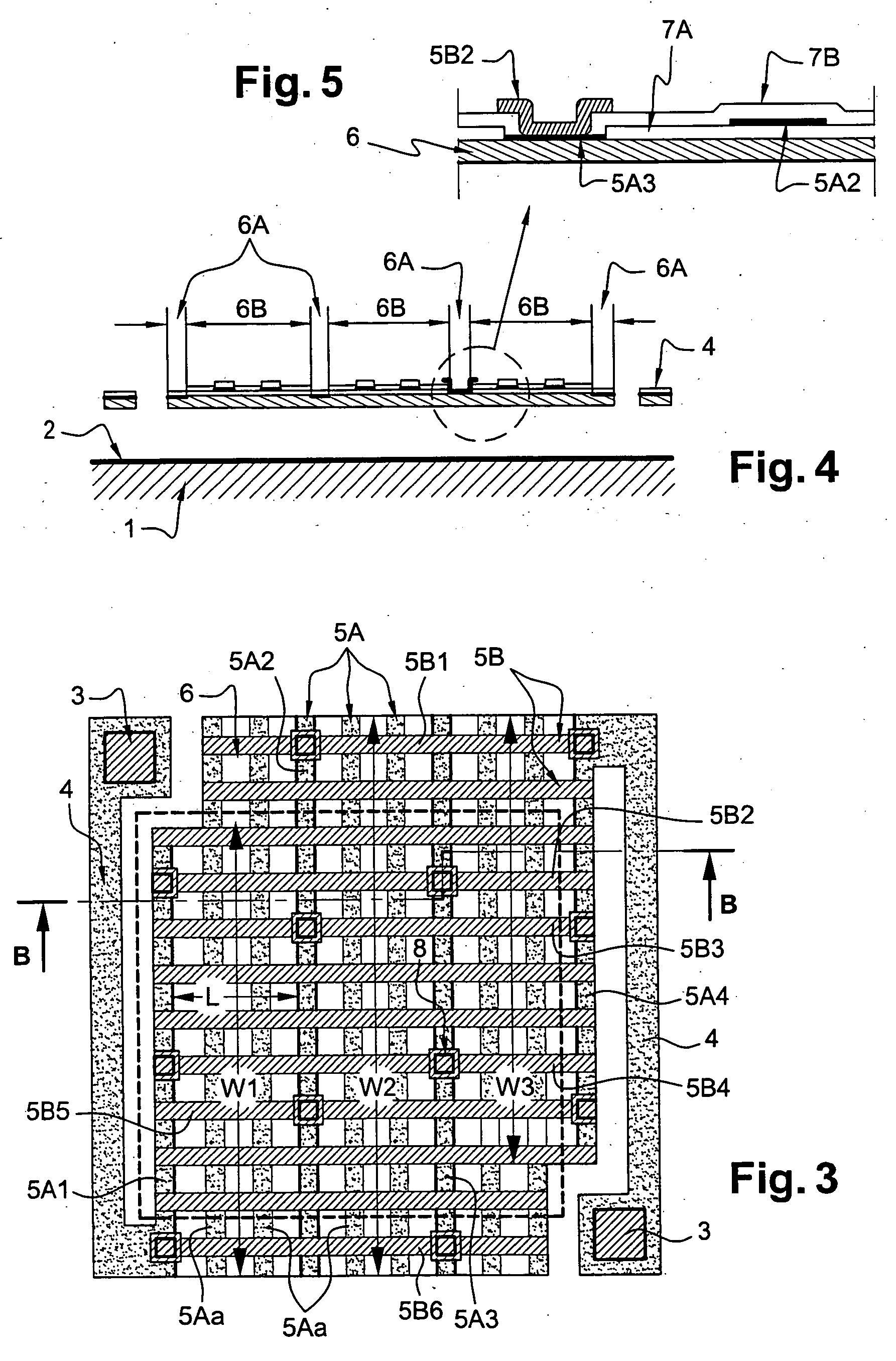Bolometric detector, device for detecting infrared radiation using such a detector and method for producing this detector
a detector and infrared radiation technology, applied in radiation pyrometry, instruments, material analysis, etc., can solve the problems of increasing electrical noise level, occurrence of areas where the current density exceeds the average density, and unsuitable for readout circuits, etc., to achieve the effect of maximising the useful surface area of bolometric materials
- Summary
- Abstract
- Description
- Claims
- Application Information
AI Technical Summary
Benefits of technology
Problems solved by technology
Method used
Image
Examples
Embodiment Construction
[0081] The invention therefore initially relates to an elementary bolometric detector and, more particularly, the configuration and layout of the conductive tracks on its sensitive part which itself constitutes the heart of the membrane. These conductive tracks function, as appropriate, as electrodes, i.e. they supply electric current from the readout circuit to the sensitive part, and as an absorber of the infrared radiation to be detected, or only function as an absorber.
[0082]FIG. 3 shows a typical embodiment of the bolometric membrane according to the invention. The various components that are also common to FIG. 1 have the same reference numeral.
[0083] According to a fundamental feature of the invention, said membrane accommodates two separate networks of conductive tracks (5).
[0084] The first network consists of a series of conductive tracks (5A) that are essentially straight and parallel to each other. In the example described, four of these tracks (5A1, 5A2, 5A3 and 5A4) ...
PUM
 Login to View More
Login to View More Abstract
Description
Claims
Application Information
 Login to View More
Login to View More - R&D
- Intellectual Property
- Life Sciences
- Materials
- Tech Scout
- Unparalleled Data Quality
- Higher Quality Content
- 60% Fewer Hallucinations
Browse by: Latest US Patents, China's latest patents, Technical Efficacy Thesaurus, Application Domain, Technology Topic, Popular Technical Reports.
© 2025 PatSnap. All rights reserved.Legal|Privacy policy|Modern Slavery Act Transparency Statement|Sitemap|About US| Contact US: help@patsnap.com



